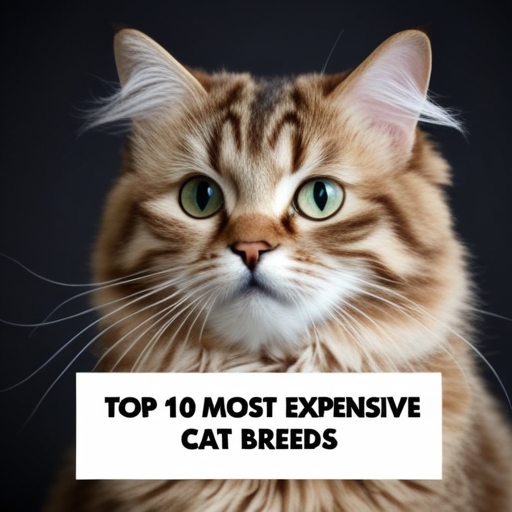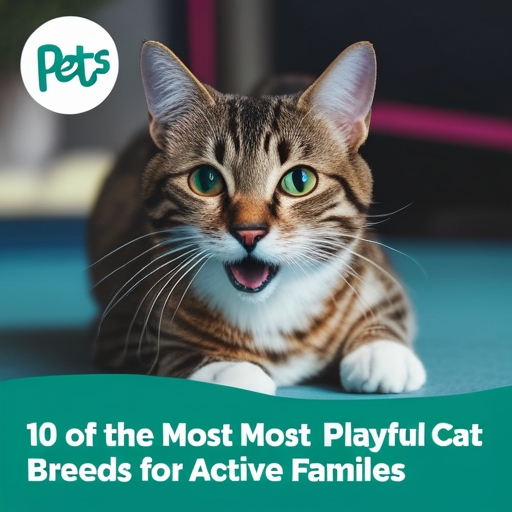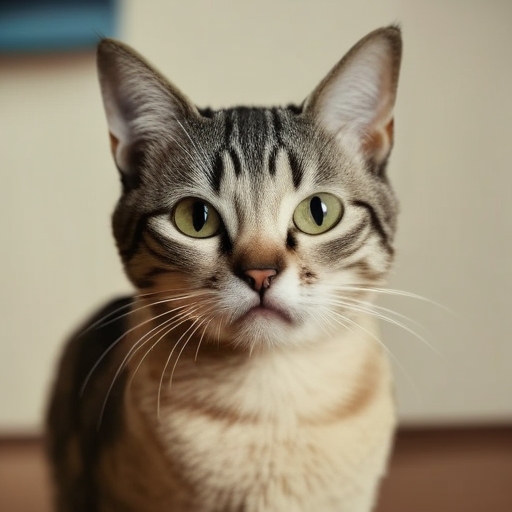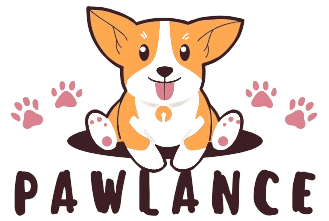Top 10 Most Expensive Cat Breeds

Russian Blue The Russian Blue is a highly sought-after and expensive cat breed, renowned for its stunning appearance and endearing personality. Here are some key characteristics that make this breed so desirable: Russian Blues are medium in size, with adults typically weighing between 8 to 15 pounds, where males are generally larger than females. They have a long, lean body that is fine-boned yet muscular, complemented by a wedge-shaped head, large delicate ears, and roundish, bright green eyes. Their legs are long and lean, and they have a long tail that adds to their elegant and graceful appearance. One of the most distinctive features of the Russian Blue is its short, dense coat that is uniformly steel blue in color. Each hair is silver-tipped, giving the coat a shimmering, smoky sheen. This unique coat coloration, along with their mauve or lavender footpads, sets them apart from other blue-coated cats. Russian Blues are known for their friendly, intelligent, and loyal nature. While they may appear aloof or shy around strangers, they are deeply affectionate and playful with their owners. They enjoy human interaction and are often described as calm, gentle, and sweet. These cats are highly intelligent and can be easily trained, with many enjoying games like fetch. Russian Blues are generally a healthy breed with a long lifespan, typically ranging from 12 to 15 years, although some have been known to live up to 20 years or more. They are somewhat hypoallergenic due to their low shedding coat, making them a good choice for people with mild cat allergies. These cats thrive in calm, predictable environments and are not ideal for noisy or chaotic households. They require regular grooming, about once a week, to maintain their beautiful coat. Russian Blues are adaptable to both indoor and outdoor living but prefer a calm and peaceful home environment. The Russian Blue is one of the more expensive cat breeds, with prices ranging from $500 to $1000 USD, depending on the intensity of their coat color and other factors. Their unique appearance, intelligent nature, and loyal personality make them a valuable and beloved companion for many cat enthusiasts. British Shorthair The British Shorthair boasts a compact, well-balanced, and powerful body with a broad chest, short to medium strong legs, and rounded paws. According to PetMD, the head is rounded with good width between the ears, round cheeks, a firm chin, medium-sized ears, and large, round eyes that can be blue, copper, gold, or odd-eyed depending on the coat color. Persian Cat The Persian cat has a rich history, with the oldest written records dating back to the early 1500s. However, some believe that the long-haired cats depicted in ancient hieroglyphs may be ancestors of the Persian cat, suggesting an even older lineage. Originating from the Persian Empire, these cats have been associated with nobility and elegance throughout history. Peterbald The Peterbald is considered one of the more expensive cat breeds, with prices ranging from $1000 to $2000 USD, reflecting their unique genetic makeup, the specialized care they require, and their popularity among cat enthusiasts. Bengal Cat The Bengal cat, renowned for its striking appearance and vibrant personality, is a hybrid breed that has garnered significant attention and admiration. This breed is the result of a deliberate breeding program initiated in the 1960s and restarted in 1981, aiming to combine the genetic traits of the Asian Leopard cat (Felis bengalensis) with those of domestic cats to create a wild-appearing yet domesticated feline. Lykoi The Lykoi is one of the more expensive cat breeds, with prices ranging from $2,000 to $3,000 according to Purina. Scottish Fold The Scottish Fold’s unique appearance is due to a genetic mutation that affects cartilage formation, known as osteochondrodysplasia. This mutation can lead to various health issues, including deformities and potential arthritis, particularly in the tail and joints. It is crucial to handle their tails gently to avoid causing pain. Breeding Scottish Folds requires careful consideration, as breeding two folded-eared cats can result in impaired kittens with difficulty walking. According to Wikipedia, this genetic condition is a defining characteristic of the breed and requires special attention in their care. Toyger The Toyger is a relatively rare breed, which is reflected in its cost. The price range for a Toyger can vary from $1,500 to $6,000, depending on factors such as the breeder, bloodlines, and location; this information is supported by a reputable source like Cattitude Seattle. Sphynx The Sphynx cat is one of the more expensive breeds, with a price range typically between $2,000 to $5,000, partly due to the need for breeders to test for genetic health issues such as hypertrophic cardiomyopathy (HCM), as indicated by PetMD. Savannah Cat The Savannah Cat is classified into different generations based on their parentage. F1 Savannahs, which are 50% serval and 50% domestic cat, are the most expensive and least domesticated, costing up to $20,000. Later generations, such as F2 and F3, are smaller and more affordable, ranging from $1,000 to $12,000. The cost is largely due to the difficulty and expense of breeding these cats, including the challenges of housing and feeding servals and the complications that can arise during pregnancy and breeding.
10 of the Most Playful Cat Breeds for Active Families

Siamese The Siamese cat is an exemplary choice for active families due to its highly energetic, social, and playful nature. This medium-sized, sleek breed is characterized by its long, tapering lines, muscular yet lithe build, and strikingly blue, almond-shaped eyesPetMD. Appearance and Physical Characteristics Siamese cats are known for their short, soft coat which comes in a variety of colors including seal, chocolate, blue, and lilac, with distinctive darker color patterns on the ears, face, tail, legs, and feet. These point patterns are a result of recessive genes that cause the production of melanin only in cooler areas of the skin. They typically weigh between 8-12 pounds and have a life expectancy of 15-20 yearsWikipedia. Personality and Social Needs Siamese cats are renowned for their sociable and affectionate personalities. They bond strongly with their human family, often following their owners around the house and seeking constant interaction. This breed is highly vocal, using loud, deep voices to “talk” and communicate with their owners, and they can become depressed if left alone for extended periods. Their even-keeled temperament makes them an excellent fit for families with children and other pets, provided those pets have similar energy levels. Playfulness and Activity Level Siamese cats are incredibly playful and require a high level of activity to stay entertained. They thrive on family playtime and conversation, needing plenty of toys and tall cat trees to explore. Engaging in games and providing enrichment activities is crucial to prevent boredom, as they can get bored quickly if their needs are not met. Their intelligence and agility also make them great jumpers, and they appreciate heights, making perches and cat trees essential components of their environment. Care and Health Considerations While Siamese cats have low grooming needs due to their short coat, they do appreciate brushing as a form of affection. They are also prone to certain health issues, such as eye problems and poor eyesight, so regular veterinary check-ups are important. Additionally, their slim legs are not designed to support excess weight, so careful nutrition management is necessary to prevent obesity. Overall, the Siamese cat is an ideal breed for active families who can provide the necessary attention, interaction, and enrichment activities to keep this energetic and loving cat happy and healthy. Japanese Bobtail The Japanese Bobtail is a highly energetic and playful cat breed that makes an excellent addition to active families. Here are some key characteristics that highlight their suitability for dynamic households: Physical Characteristics Japanese Bobtails are small to medium-sized cats, with females weighing between 5 and 7 pounds and males weighing between 8 and 10 pounds. They are known for their muscular build, particularly in their hind legs, which are longer than their front legs and give them a distinctive Z-shaped stance. This physical trait enables them to make high jumps and move with remarkable agility. Their coat can be either short or long, but it is always silky and soft. The breed comes in a wide variety of colors and patterns, with bi-colors and calico being particularly common. One of the most recognizable features of the Japanese Bobtail is its short, pom-pom-like tail, which is a result of a recessive gene. Abyssinian The Abyssinian breed is perfect for families who are looking for a playful, intelligent, and affectionate cat that will keep them engaged and entertained, as highlighted by their high energy levels and interactive nature according to Cornell University College of Veterinary Medicine. Manx The Manx cat boasts a thick, double coat that can be either short or long, with the long-haired version sometimes referred to as the Cymric. Their coats come in a wide range of colors and patterns, including white, blue, black, red, cream, silver, tortoiseshell, and brown, although they do not come in the pointed pattern or colors like chocolate or lavender. Siberian The Siberian cat is an exemplary choice for active families seeking a playful, intelligent, and affectionate companion. Here are some key characteristics that make Siberians stand out: Siberian cats are renowned for their high intelligence and playful nature. They are among the smartest cat breeds and love to engage in interactive games and activities that challenge them mentally. Whether it’s chasing a feather toy, climbing furniture, or exploring every nook and cranny of the house, Siberians are always eager to play and stay active. According to Wikipedia, these feline friends are quick learners and enjoy mental stimulation through play. Burmese The Burmese cat is an exemplary choice for active families due to their energetic, playful, and highly social nature. Here are some key characteristics that make them stand out as one of the most playful cat breeds: Burmese cats are medium-sized, with strong, muscular bodies and a stocky, compact build that belies their actual weight. They have short, silky coats that come in a variety of colors including sable, champagne, blue, platinum, and several others. Their grooming needs are minimal, requiring only occasional brushing to remove loose hair and maintain their coat’s appearance. Burmese cats are known for their lifelong kitten-like personality, remaining playful and energetic well into adulthood. They are curious and love to explore their surroundings, making them ideal for homes with secure outdoor areas or catios where they can exercise their natural instincts. These cats are highly people-oriented and affectionate, often displaying dog-like loyalty to their families. They thrive in family settings where they can receive ample attention from multiple people, making them excellent companions for households with older children. Burmese cats form strong bonds with their humans and can become upset if left alone for extended periods, so they are not suited for households where they would be isolated for long. Burmese cats are intelligent and curious, enjoying mental stimulation through puzzles and interactive toys. They are quick learners and respond well to positive reinforcement, allowing them to pick up basic commands like “sit” and “come”. Given their high energy levels, Burmese cats require regular playtime and physical activity. They benefit from having cat trees, scratching posts, and a
8 Flat-Faced Cats with the Cutest Smooshed Faces

Breed Characteristics Breed Characteristics Flat-faced cat breeds, scientifically known as brachycephalic breeds, are distinguished by their unique and endearing facial structure. Here are some key characteristics and health considerations associated with these breeds. Facial Structure The most defining feature of flat-faced cats is their brachycephalic skull, which results in a flat face and short nose. This shortened skull bone leads to a pushed-in face and nose, giving them an almost cartoon-like or human-like appearance. Breeds such as the Persian, Himalayan, and Exotic Shorthair have the most extreme flat faces, with their forehead, nose, and chin often appearing in vertical alignment when viewed in profile Physical Appearance Flat-faced cats vary in size and body type but often share certain physical traits. For example, the Persian cat is known for its strong, muscular body, short legs, and a long, luxurious flowing coat that requires regular grooming to prevent matting. The British Shorthair, another moderately flat-faced breed, has a compact, well-balanced body with a short, dense coat and round, expressive eyes. Temperament These cats are generally known for their calm, affectionate, and gentle nature. Persian cats, for instance, are praised for their sweet, laid-back temperament and love for being showered with affection. They prefer quiet environments and are not suited for households with extremely energetic children. Similarly, the British Shorthair is described as sweet, easy-going, and affectionate, making them an instant charmer. Health Considerations While their unique faces are undeniably cute, they also come with specific health challenges. Brachycephalic airway syndrome is a common issue, resulting from the narrowed nostrils and compressed upper respiratory tract. This can lead to symptoms such as noisy breathing, snoring, and difficulty exercising, especially in hot weather. Dental problems are another concern due to the shortened jaw, which can cause overcrowding of teeth, misalignment, and an increased risk of dental disease. This not only affects their ability to eat but can also lead to chronic pain. Eye conditions are prevalent due to the prominent, wide-set eyes and shallow eye sockets that do not fully protect the eyeball. This increases the risk of dryness, ulcers, and traumatic injuries. Additionally, the tear ducts in these breeds may not function optimally, leading to persistent tear staining and potential infections. Understanding these health considerations is crucial for ensuring the well-being of these beloved pets and providing them with the necessary care and attention. Persian The Persian cat is one of the most recognizable and beloved flat-faced cat breeds, renowned for its distinctive appearance and gentle nature. Characterized by their extremely flat faces, Persians have a breed standard that specifies their forehead, nose, and chin should appear in vertical alignment when viewed in profile. This unique facial structure, combined with their large, round, full eyes set far apart, gives them a particularly sweet and endearing expression. Persian cats are medium in size, with short, muscular legs and a strong, stout body. They have full cheeks, small noses and mouths, and small ears in proportion to their head. Their long, wavy fur is a hallmark of the breed, requiring regular grooming to prevent matting and tangling. The eye color of Persian cats often matches their fur colors, with common shades including brown, grape, and gold. Known for their calm, gentle, and affectionate personalities, Persian cats are ideal lap cats. They love to be held, cuddled, and showered with affection, often enjoying long periods of being petted. These cats are not very curious or active and prefer quiet, peaceful environments, making them a great fit for homes with predictable routines and minimal noise. They are particularly suited to families with older children or those who can provide a gentle and calm atmosphere, as they may not get along well with extremely energetic children. Despite their laid-back nature, Persian cats are very attached to their owners and can be quite vocal when expressing their concerns. However, they are generally quiet and not prone to excessive meowing. They enjoy lounging in sun-warmed spots and can be left alone for extended periods as long as they feel secure and comfortable. The life expectancy of Persian cats is typically between 12 to 15 years, and they require careful attention to their diet, grooming, and health to ensure they live a happy and healthy life. Himalayan The Himalayan cat is a captivating breed known for its unique blend of physical and personality traits, making it a favorite among cat enthusiasts. Here are some key characteristics of the Himalayan cat: Physical Characteristics Himalayans are medium-sized cats, typically weighing between 8 and 15 pounds, although their dense, long fur can make them appear larger. They have a distinctive flat face, a trait inherited from their Persian ancestry, characterized by a short snout, round eyes, and chubby cheeks. This brachycephalic feature gives them an endearingly sweet expression. Their coat is long, dense, and thick, requiring daily grooming to prevent matting and tangling. The coat colors and patterns are pointed, meaning the extremities (face, ears, legs, and tail) are darker, while the rest of the body is lighter. Available colors include chocolate, seal, lilac, blue, and various other shades such as flame, red, and cream. Personality and Behavior Himalayans are known for their gentle, affectionate, and highly intelligent nature. They are often described as lap cats due to their love for human companionship and their calm, easygoing demeanor. They rarely vocalize and can adapt well to apartment living and smaller spaces, especially if introduced to other animals at a young age. Despite their calm nature, Himalayans can exhibit bursts of kitten-like activity, enjoying playtime with interactive toys, chasing balls, and engaging with catnip mice. However, they may need encouragement to exercise regularly to maintain a healthy weight, as they are prone to obesity. Health and Longevity Himalayans generally have a moderate to long lifespan, typically ranging from 8 to 15 years. However, their close genetic relationship to Persians puts them at a higher risk for health issues such as polycystic kidney disease and progressive retinal atrophy. Additionally, their flat-faced anatomy can lead to
